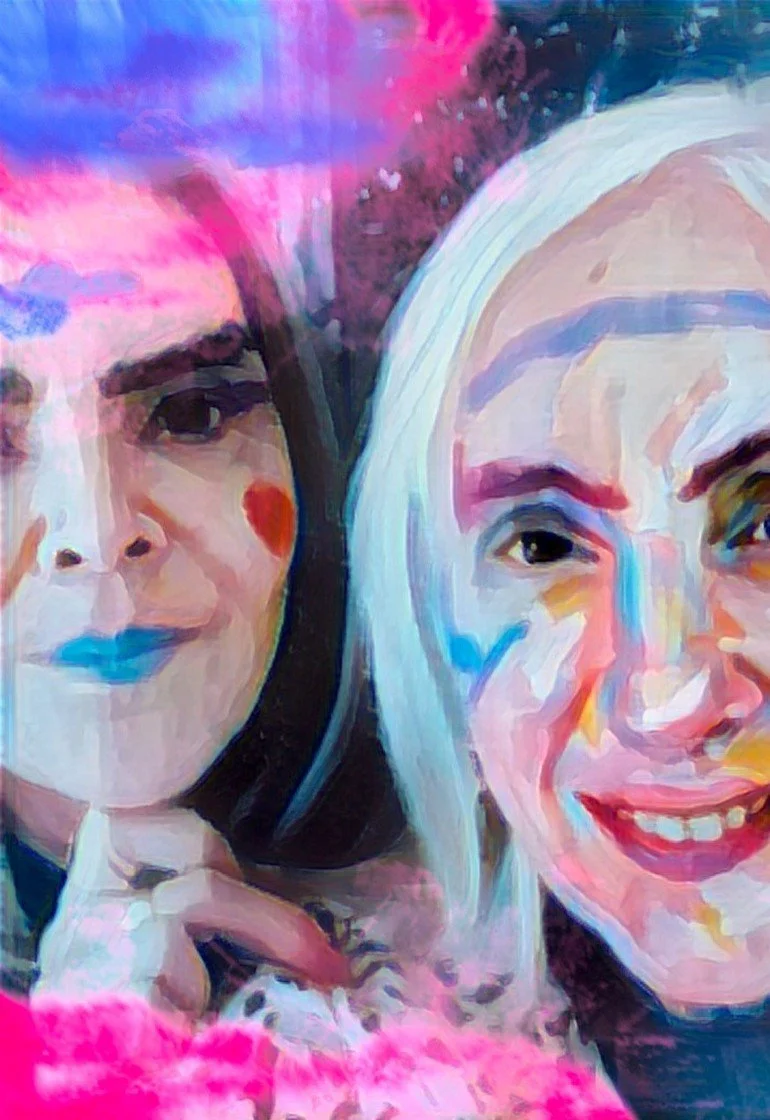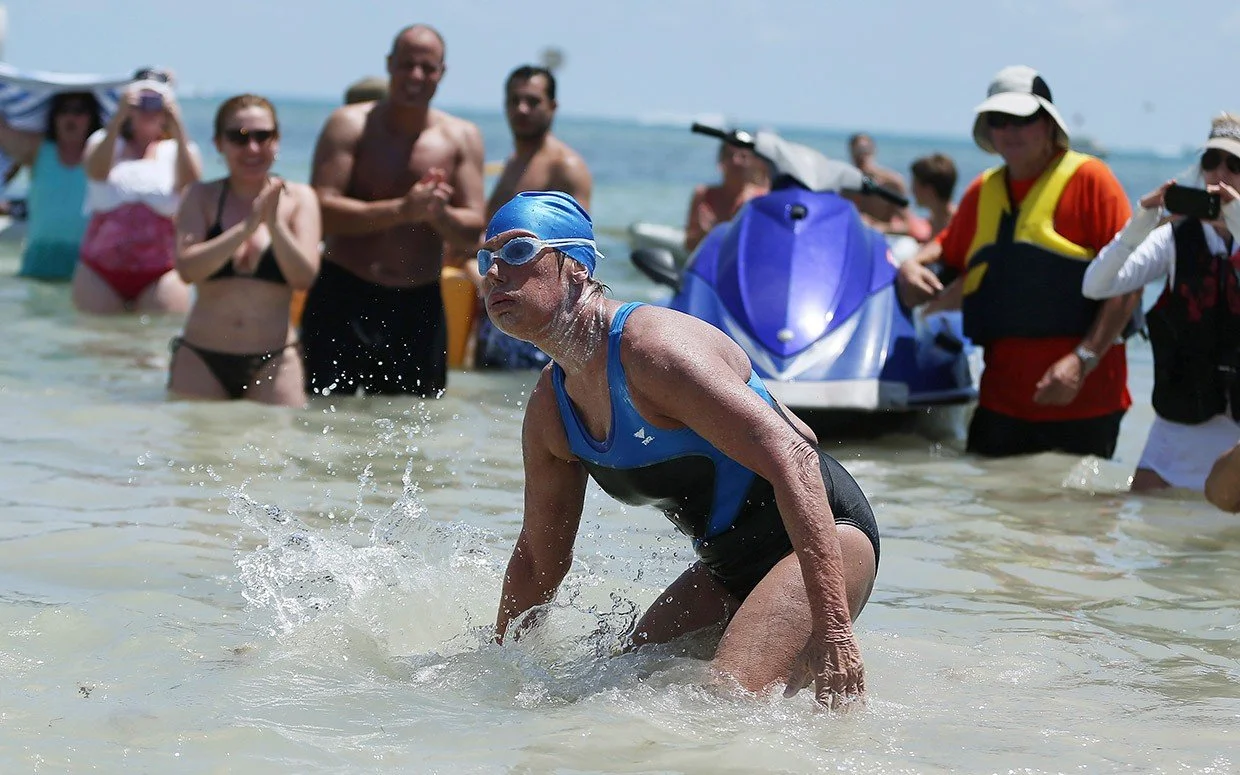Old Bodies, Old Faces, New Year
Ongoing conversations about older women’s experience of their physical appearance as they grow older
Another New Year. May sound hackneyed, but at our age “New Years” seem to be racking up at a dizzying speed. For many, it’s a time for resolutions, often having to do with losing weight, exercise, eliminating myriad bad habits, and adopting new healthy ones. For some it extends to cosmetic treatments and procedures to enhance how we look, including pushing back the hands of time on our bodies and faces. While Two Old Bitches, Idelisse Malavé and Joanne Sandler, stopped adopting annual resolutions some time ago, that doesn’t mean we don’t look for, adopt and practice new ways to be healthy and yes, look good. Sometimes, that means we come up against the conundrum of the aging feminist.
Certainly, trying to get and stay healthy and fit doesn’t raise ideological flags. But the allure and motivation behind these efforts and a whole bunch of others (especially many aimed at aging faces) can also stem from a desire to look good, and for women in the second half of life that can translate to a desire to look younger.
That’s not surprising. Beauty standards in this country and much of the world aren’t just sexist and racist, they are also ageist. Pursuing our own ideas of beauty in a society oppressively preoccupied with youth and women’s appearance is not simple or easy. For older women, it is an act of resistance.
We see the pursuit of beauty as a facet of “a woman’s right to choose,” while recognizing the value of interrogating those choices. To what extent does how we fashion our physical appearance reflect personal aesthetics, style, pleasure and agency? To what extent is it shaped by social and cultural norms, the “male gaze” and popular media? Does looking good necessarily mean looking younger? Is it wrong to still want to look “hot?” Do our choices consolidate or disrupt oppressive systems? And, what about the often pragmatic choices older women make about how they look in order to earn a living, further their careers and avoid being marginalized as “old” or “unattractive.” (Idelisse dyed her hair into her late 50s in part for those very reasons.)
It can be difficult to detect the signal from the noise when it comes to how we want to look and what we are willing to do to look that way. How we navigate these colliding variables, along with wanting to stay vital and healthy, differs for each of us. It’s a wide and idiosyncratic spectrum. For some it can be a slippery slope.
From girlhood and throughout our lives we are bombarded with so many messages about what is or isn’t beautiful and alluring in a woman. Writing about a feminist approach to mothering daughters decades ago,¹ Idelisse focused on beauty and body image. In the Introduction to Mother Daughter Revolution, she shared that her mother was a gifted seamstress who made-up for the family’s limited resources by sewing all Idelisse’s clothes when she was a girl, and went on to write:
As I got older, I began to long for store-bought clothes. At thirteen, I was invited to my first teenage party with boys and dancing, and my mother generously took me shopping for a dress. I tried on dress after dress, under my mother’s expert eye. Each was rejected in turn. One wasn’t slimming. Another didn’t make me look taller. I looked too flat-chested in the blue. My waist didn’t look small enough in the red, green, or gray. I began to realize that we weren’t looking for a dress, not really. We were looking for a disguise, a costume that would mask my many flaws and fool boys into believing I was attractive when I wasn’t. …Finally, we found the perfect dress, the best disguise. It was black, of course.
…My mother understood the realities of the world. To make it, to be safe, a woman has to be attractive to men.
It was the early 60s before the second wave of feminist movement, and most people, mothers included, accepted that a woman’s looks were her primary currency, along with subscribing to rigid beauty standards reinforced by movies, television and magazines. While we have made some headway, today’s barrage of social media images ‘beautified” by face filters and the influencers instructing on beauty tips and secrets on Tik Tok and YouTube appear to belie our progress. In fact, a recent article in the MIT Technology Review led with “The most widespread use of augmented reality isn’t in gaming: it’s the face filters on social media.” Artificial intelligence driven by algorithms is shaping and enforcing today’s beauty standards.
Beyond these socially constructed standards is an ineffable sense of beauty that occupies a place in most of our lives. Philosophers struggle to define it and scientists routinely ignore it. And feminists wonder:
Is every experience of beauty also a source of harm? Is beauty intrinsically and inevitably wrong? …Or is there a place in feminist thought for what we might call a positive aesthetic, an affirmation, however conditional, of the value of beauty and aesthetic pleasure?²
Familiar with the transcendent delight beauty elicits, we are drawn to aesthetic pleasure. Instead of always equating women’s desire to look good to capitulating to the infamous “male gaze,” feminist bell hooks urges us to create “alternative visions of beauty.”³ The individual choices we make about how we want to look and what we do to look that way can be part of a collective effort to create these alternative visions. Imagine that. Imagine that older and old women are beautiful.
When you think of an old women, does the image of a stooped, fragile, thick around the middle, white-haired woman moving slowly, in a frumpy dress, holding a cane with gnarly hands, and grappling to remember things come to mind? In the words of leading anti-ageist activist and author Ashton Applewhite, “As with all ‘isms,’ stereotyping lies at the heart of ageism: the assumption that all members of the group are the same.”⁴ Always a mistake, ageist stereotyping ignores the reality that aging is a biological process that varies from person to person.
We all know people in their sixties who seem older and frailer than some 80-year-olds. When it comes to chronological age, the saying “age ain’t nothing but a number” is mostly true. Our health, vitality and fitness, what some call “biological age,” also shapes how we look.
When people learn that Idelisse’s mother lived past 99 years and her father past 93, they usually comment, “Good genes.” Maybe. Experts now believe that longevity, good health and how we look is more a question of lifestyle, behaviors than genes. Best estimates are that it about 80% nurture and only 20% nature.⁵ There’s not much we can do about our genes, but we can make behavioral choices that seem to keep the deterioration and diseases associated with old age somewhat at bay.
Anti-ageist activist and author Ashton Applewhite.
When we first met and interviewed anti-ageism activist Ashton Applewhite, she mentioned that she was often taken for someone younger than a woman in her sixties. We could see how, with a smooth and glowing complexion, and said so. “Hats,” she responded. She has routinely worn hats for decades to minimize sun damage, along with sunscreen. We regretted that we had not, and knew from our dermatologists that we bore the marks of the sun.
Some laser treatments partially erase sun damage, from wrinkles to brown spots to broken blood vessels and pre-cancerous lesions. Is wanting smoother, clearer skin just about looking younger? Is it about undoing sun damage? Is it vain? No simple answers with this configuration of questions. We both made a considered, personal choice to try these treatments, knowing it’s not the right choice for everyone.
One of us wonders if she might get a facelift at one point, while the other is sure she won’t. One of us wears make-up and has a skincare routine with a gentle cleanser (never soap), moisturizers, creams and sunscreen, while the other just rinses her face in the morning when she showers, applies no creams or lotions, and doesn’t wear any make-up except for the rare special occasion. We each make and interrogate our different choices to please ourselves.
Now in our seventies, do we still want to look “hot?” Yes! Each of us has had the experience of a younger woman friend telling us that their partner commented upon meeting us that we were “hot.” Idelisse admits that she is abashedly pleased albeit taken aback when it happens. Joanne is nonchalant about it. Is wanting to look hot succumbing to the “male gaze? Not in our books. It is part of life, and not limited to people under 60 or 70. Many edgy elders are attracting partners and having the best sex of their lives in their seventies and beyond. Hard to believe? That is what the New York Times reported the other day in a spread in the magazine section. You can’t argue with the New York Times, can you?
This article is a window into our ongoing conversations about older women’s experience of their physical appearance as they grow older. In a subsequent piece we plan to share more about strategies and practices to maintain and improve the health, vitality, fitness and yes, the look of old bodies and faces. In yet another, we will explore dressing and styling the whole package. (You may not know that Joanne and Idelisse love to shop –we were gutted by Century 21’s⁶ closing– and like to play with how we dress.)
We are endlessly curious about readers thoughts and comments about this and other aspects of growing old. What’s your relationship to your physical appearance? Do tell!
¹Mother Daughter Revolution, Elizabeth Debold, Marie Wilson and Idelisse Malavé, Bantam (1993)
²Because It Is Beautiful, Rita Felski, Feminist Theory, Sage Publications (2006)
³ Feminism Is for Everybody, bell hooks, Routledge (2014)
⁴ This Chair Rocks: A Manifesto Against Ageism, Ashton Applewhite (2016) is a great read. To listen to Two Old Bitches conversation with Ashton, click here.
⁵ Lifespan: Why We Age — and Why We Don’t Have To, Dr. David Sinclair (2019); “Why Study Centenarians? An Overview,” Boston University School of Medicine (2021).
⁶ Century 21, billed as “the best discount department store in the universe,” started as one store in New York over 60 years ago. It grew to 13 stores in New York, Pennsylvania and Florida, before succumbing to Covid-19, and filed for bankruptcy in 2020. Word is that they will reopen, and our fingers are crossed.



